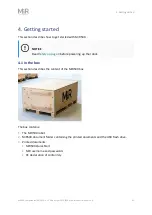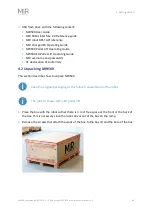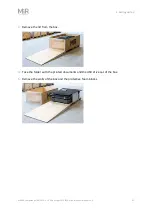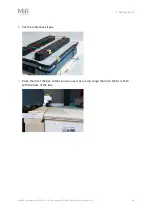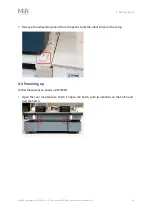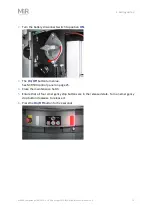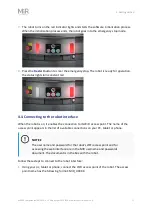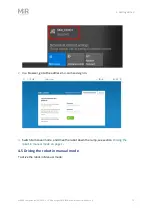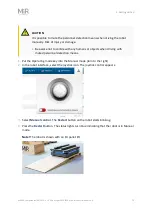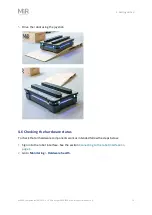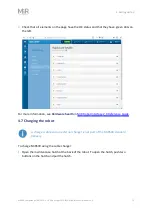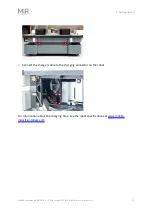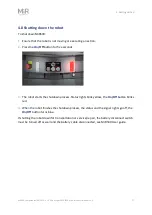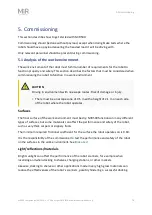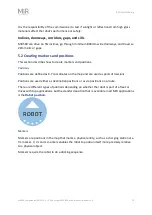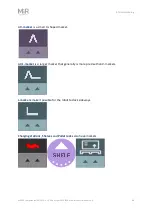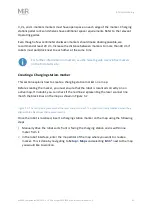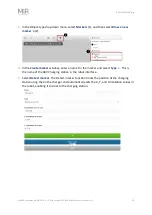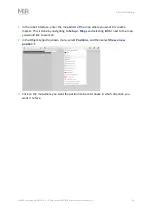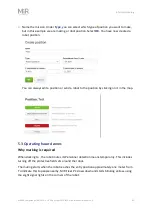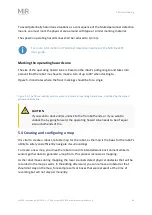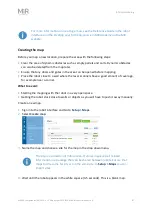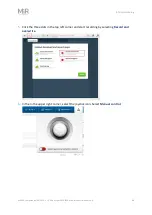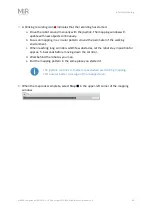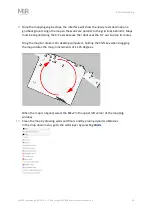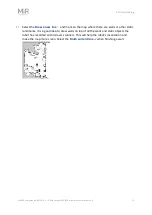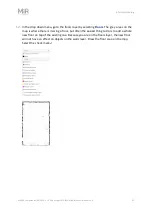
5. Commissioning
MiR500 User guide (en) 09/2019 - v.1.3 ©Copyright 2018-2020: Mobile Industrial Robots A/S.
78
5. Commissioning
This section describes how to get started with MiR500.
Commissioning should be done without payload, except when doing brake tests where the
robot should have a payload equaling the heaviest load it will be driving with.
Only relevant personnel should be present during commissioning.
5.1 Analysis of the work environment
The work enviroment of the robot must fulfill a number of requirements for the robot to
function properly and safely. This section describes the factors that must be considered when
commissioning the robot to function in a work environment.
CAUTION
Driving in environments with no escape routes. Risk of damage or injury.
•
There must be an escape zone of 0.5 m with a height of 2.1 m on each side
of the robot where the robot operates.
Surfaces
The floor surface of the work environment must be dry. MiR500 functions on many different
types of surfaces, but some materials can affect the performance and safety of the robot,
such as very thick carpets or slippery floors.
The minimum required frictional coefficient for the surface the robot operates on is 0.60.
It is the responsibility of the commissioner to test the performance and safety of the robot
on the surfaces in the work environment. See
.
Light/reflections/materials
Bright sunlight can affect the performance of the robot scanners, for example when
localizing and when docking to shelves, charging stations, or other markers.
Likewise, docking to shelves or other applications made in very high gloss materials can
reduce the effectiveness of the robot's scanners, possibly hindering a successful docking.


